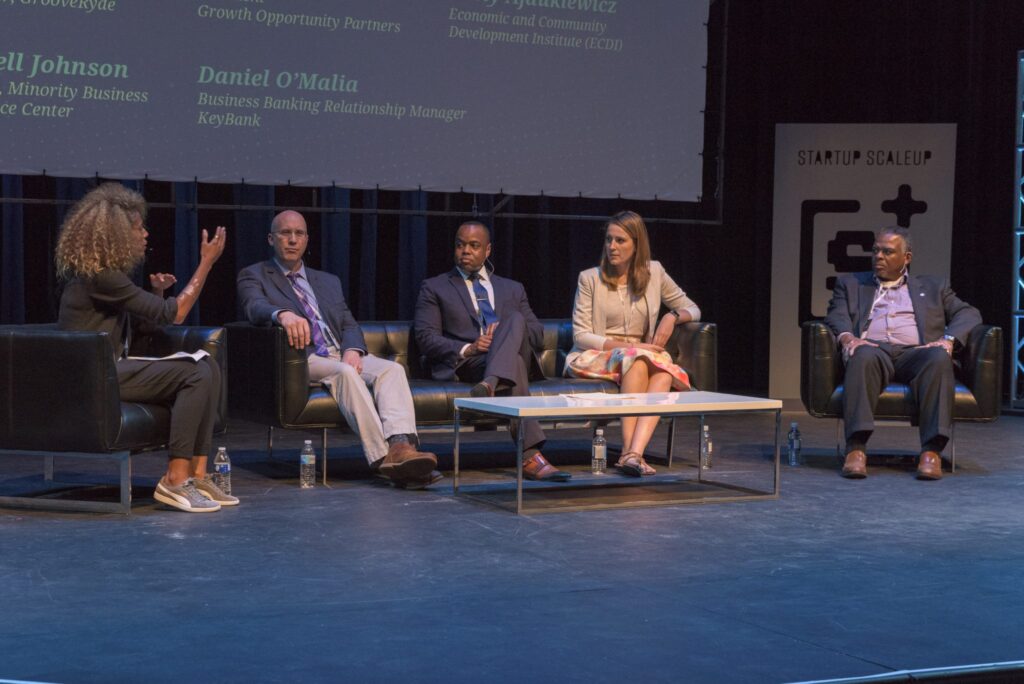VentureForward Blog Series: Adding an Organic Approach to Diversifying the Venture Capital Industry
Note from NVCA: As part of NVCA’s VentureForward initiative, we launched this blog series in November 2017 for industry leaders to share their perspectives on why diversity and inclusion (D&I) are important for the future of VC, their firm’s activities and approach to D&I, and guidance for how we—as an industry—can drive meaningful change.
Stay up to date on the latest VentureForward news, resources, and releases here. Contact ventureforward@nvca.org to learn more and get involved.
Ray Leach, Founder & CEO of JumpStart Inc., continues the series with his post below:
Adding an Organic Approach to Diversifying the Venture Capital Industry
Many have written about the lack of diversity in technology and venture capital, and what leaders can do to address this challenge/opportunity. While this situation is serious, and those who lead firms need to continue to make greater progress, there are also important additional ways to accelerate diversity and inclusion—to add to what existing firms may be doing. In the long run, these efforts could play an equal, if not more important, role in diversifying the industry.
In his recent book, “The Innovation Blind Spot”, Ross Baird discusses how many VCs spend a lot of time thinking about “disruption,” yet they end up acting in ways that are easy and familiar at the expense of embracing diversity and transformational change to create partnerships with individuals with different backgrounds than their own.
I agree with some of Baird’s critiques, but reading his book made me consider something else—when it comes to increasing diversity and inclusion in the tech and VC industry, why not also pursue ideas that begin to transform the industry from the ground up, versus only asking incumbent firms to change their ways?
A Rite of Passage
I recently had the opportunity to meet the leaders of the Venture Capital Institute (VCI). For more than 40 years, VCI has been a place where new entrants to the venture capital industry learn more about the fundamentals of investing in early-stage technology firms. Participants also make key connections to other individuals who are joining the venture industry around the same time, and these relationships often meaningfully serve these individuals throughout their career.
In recent years, the NVCA has also focused on expanding education opportunities for those looking to get their foot in the industry, through programs such as the Seed Manager Workshop and the Stanford/NVCA Venture Capital Symposium.
Traditionally, most who have attended these types of training programs are new associates of existing venture capital funds and are sponsored by their new employers. As one might imagine, many of these individuals go on to start successful venture capital funds of their own. However, as venture capital industry statistics indicate, you would not be surprised to learn most individuals who have had access to these opportunities over the last decades have been white and Asian males.
So, how might someone who has not had the opportunity to be hired by an existing venture capital firm access these kinds of important and valuable training opportunities, which enhance and accelerate one’s insights, understandings and connections to the technology startup and venture capital community?
A New and Organic Way to Increase Diverse Venture Investors and Funds
At JumpStart our non-profit mission is to “unlock the full potential of diverse and ambitious entrepreneurs to economically transform entire communities.” As part of these efforts, we advise, coach and mentor hundreds of entrepreneurs each year. We also invest in Ohio-based seed and Series A-stage tech startups via numerous investment funds. This includes our $10M Focus Fund, which invests solely in startups led by female entrepreneurs and/or entrepreneurs of color. To date, JumpStart has invested nearly $45M in more than 104 firms, and well over a third of these investments have been made into firms led by diverse entrepreneurs.

Ray leading a panel at JumpStart Inc.’s Startup Scaleup 2017 event
One great thing about JumpStart is we can do things to advance our mission that also help to transform our national economy, including championing efforts to accelerate the diversification of the tech and venture capital community across the U.S.
One of the greatest challenges for diverse professionals to become part of the current U.S. venture capital industry is that the industry itself is actually very small. Add on top of this the realities of both racial bias and the general “birds of a feather flock together” mentality of human beings, and it becomes hard for diverse Americans to find enough opportunities to make a dent in the diversity numbers of investment decision makers employed by U.S. venture capital firms.

Audience at one of the panels at Startup Scaleup 2017
These realities lead me to conclude if the U.S. is going to make real progress in increasing diversity in the VC industry relatively quickly (e.g. in the next 5-10 years), public, private and philanthropic entities who believe in the importance of diversifying this industry could play a larger role—specifically, by helping to eliminate or reduce the cost of training opportunities for diverse participants.
By partnering with established and trusted organizations who are doing this work, venture firms, limited partners and startups would be able to connect, mentor and support passionate, smart, new entrants on some of the most important elements of being part of the U.S. venture capital and tech industry.

A panel at Startup Scaleup 2017
Carefully selecting and convening 50-100 diverse participants for training each year should increase the ability for some of these individuals to join established firms. And, perhaps more importantly in the long-run, it could also lead to the creation of a small handful of new venture capital firms each year founded or co-founded by diverse Americans.
JumpStart is interested in supporting these types of efforts and would love to find public, private and philanthropic partners who agree with the idea of engaging on this issue to help make a difference in the diverse composition of the venture industry sooner versus later.
Read the other posts from this series:
Greg Sands – Focus on Progress, Not Perfection
Lisa Lambert – Diversity & Inclusion is a Growth Story
Maha Ibrahim – Canaan Forward: Diversity as an Asset
Carmichael Roberts – Being Different
Kate Mitchell – Time’s Up – We Need to Fix This

